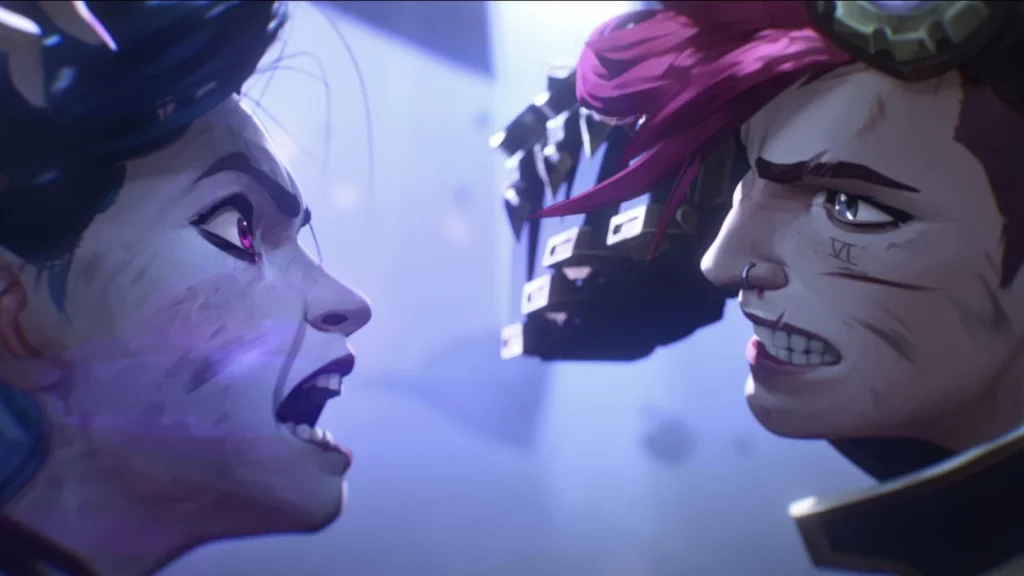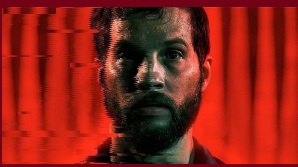Watch of the Week: Arcane Season 2
There’s never been a series quite like Arcane, and there might never be again. Based on League of Legends, a wildly successful video game and esports giant with the most generic name imaginable, Arcane: League of Legends is the most expensive animated series ever produced at a total of $250 million. The first nine-episode season took six years to make; the second, an additional three. Visually, it’s only peer is Sony the Spider-Verse films. Dramatically, its only peer is Game of Thrones. And, tragically, it’s too good to last.
Arcane is a fantasy drama set in a world divided between haves and have-nots. Sisters Vi (Hailee Steinfeld) and Jinx (Ella Purnell) have found themselves on opposing sides of a conflict between the gleaming technocratic city of Piltover and the impoverished and chaotic undercity, Zaul. While this may sound like the setup for an overplayed class war parable, Arcane endows both sisters and both worlds with a novelist’s complexity. Vi is an emotionally wounded warrior who wants to do what’s right but is driven almost entirely by guilt and self-loathing. Abandoned by her big sister as a girl, Jinx was taken in by a gang lord and mastered violence and destruction as a form of play and as a means of winning the approval of her mentor as well as soothing the pain of her childhood abandonment. They have each hurt the other deeply and brought ruin to the other’s lives. If these two can’t make peace, what hope has the world around them?
Within the short span of its first season, Arcane established a sprawling ensemble of soldiers, criminals, politicians, scientists and mystics, each with their own agendas, loyalties and complex web of relationships. This web only grows more intricate in the second season, though at the expense of clarity. Where the first season took distinct groups of characters and drew them together to a common, cataclysmic point, the second explodes them apart once again, perhaps in too many directions.

Keeping up with the season’s many subplots is a challenge, especially as they each seem to advance at a different pace, and some are back-burnered for extended periods. There is a tremendous amount of story squeezed into the six episodes out as of time of review, with enough distinct story ideas to fill twice as many. It’s hectic but never boring, and the most important character arcs still get time to develop organically.
This story compression may be a consequence of Riot Games reducing their initial order of five seasons to two due to its hefty price tag. Tencent Media pays Riot $5 million per episode to stream the show in China while Netflix pays another $5 million per episode to stream it everywhere else, and that still leaves Riot about $70 million in the hole of production costs. Whatever the effect the show’s popularity and prestige may have had on League of Legends’ microtransaction economy, that’s not sustainable, particularly given the games industry’s current free fall.

But if Riot’s choice was to either cut the show’s length or its production values, they have unquestionably made the right call. Arcane continues to be frame-for-frame gorgeous. Every element of the production shows evidence of extraordinary attention and care. The character designs, adapted from League of Legends, are distinct and identifiable even as they change over the course of the story, and are each brought to life with fluidity and specificity. It’s not only the frantic and imaginative fight sequences that astonish — the attention that goes into faces during dialogue is often just as impressive. Backgrounds and digital sets, even those used in a single scene, are lovingly rendered in digital paint, and every prop is painstakingly overdesigned to suit the show’s gears-and-pistons steampunk style. To call this animation “film-quality” is an understatement. Most Western animated films don’t look this good.

Directors Pascale Charrue and Arnaud Delord’s signature touche Fortiche art style applies the best qualities of 2D and 3D computer animation to an aesthetic that simultaneously evokes anime, American comics, and the painterly fantasy art of fantasy novels. This is distinctive enough on its own, but each episode strays from this model at least once, usually for a music video-style interlude that leans into one influence or another. A montage set to noisy punk rock mimics underground comics, while an emotional ballad backs up a flashback in faux-watercolour. And outside of these extended stylistic deviations, Charrue and Delord throw in new tricks so that the audience never gets desensitized to how incredible Arcane looks, minute to minute.

Perhaps this is part of why Riot Games doesn’t see an upside in continuing Arcane past these 18 episodes. As someone who knew nothing about League of Legends before watching and falling in love with Arcane, I still have no interest in League of Legends, a strategy game for which all of this wonderful narrative complexity is merely background. On the other hand, I’m now absolutely in the bag for whatever Studio Fortiche works on next, be it another series or a feature film. I’d be interested in seeing what showrunners Christian Linke and Alex Yee, who had never written professionally prior to Arcane, get up to next. The intellectual property is not the star of the show, and that’s great for the audience but not necessarily for the financiers. But, as tragic as the abbreviation of Arcane might be, it’s a miracle of our modern entertainment economy that it could even exist at all. A video game company invested a ludicrous amount of time and money on what could cynically be framed as a long-form advertisement and wound up with one of the best animated series ever made. That, frankly, is the stuff of Legends.
Boluwatife Adesina is a media writer and the helmer of the Downtown Review page. He’s probably in a cinema near you.






